#flutter and react-native difference
Explore tagged Tumblr posts
Text
#difference between flutter and react-native#flutter and react-native difference#cross-platform app development company#right framework for cross-platform apps#top flutter app development company#best react native app development company#hire nearshore mobile app developers
0 notes
Text
React Native vs. Flutter: Key Differences Explained
This blog highlights the key differences between React Native and other popular mobile development frameworks like Flutter, Xamarin, and native development. It provides insights into performance, development speed, learning curve, community support, and cost.
Whether you're a startup or an enterprise, this guide will help you understand which framework aligns with your project goals, budget, and technical requirements. With Shiv Technolabs, discover expert solutions tailored to build high-performing mobile applications for your business needs.
0 notes
Text
Speak
AKA how the Stardust Crusaders react when you're learning their primary language!
Ft. Muhammad Avdol, Jean Pierre Polnareff, Joseph Joestar, Jotaro Kujo, & Noriaki Kakyoin
Muhammad Avdol
When Avdol finds out you're learning his primary language of Arabic, he's honored.
Needless to say, Avdol is a great teacher as long as you're serious about learning the language.
He gives you plenty of material to help you study.
But be warned, he believes immersion is the best form of learning.
Expect for him to speak nothing but Arabic in you two's shared household on occasion.
(Don't worry. He'll help you out if he sees that you're struggling!)
Avdol teaches you basic phrases to help you navigate everyday situations while you're out and about in the city you two live in.
Again, definitely the best teacher out of the bunch.
Corrects you when you get something wrong, but takes the time to explain what was wrong about it.
"Tsk, tsk, tsk!"
Jean Pierre Polnareff
He's surprised when he finds out you're learning French.
You love him that much to learn his native tongue? How romantic of you!
He will do everything in his power to help you learn the language as he knows it can be tricky.
Kisses you sweetly every time you get something correct or even when you're wrong because at least you're trying!
He may not be the best teacher, but he's very passionate about his language and culture.
It's very infectious and is a great motivator!
He desperately hopes that you're enjoying it as much as he is.
Teaches you romantic phrases and terms fairly early into your language learning endeavors.
"I love you" is at the top of that list to teach you.
It just melts his heart to hear you say those little words in his native tongue.
Gives you little treats as motivators for when you're studying.
"How is the studying going, ma chérie?"
Joseph Joestar
Oh, boy.
When you tell Joseph that you want to start learning English, he's ecstatic.
But be warned, this man is the worse at teaching you.
He'll definitely teach you slang and curse words first.
"That's where the fun is at!" he exclaims when you chastise him for being so vulgar.
You finally get him to take teaching you English seriously (though that in itself is a feat alone).
Again, Joseph is not the best teacher.
He tries his best, but he expects you to pick up the language as quickly as he speaks it.
You then have to explain to him that he's a native speaker of English and you, in fact, are not. So naturally, it's going to take some time for you to learn the ins and outs of it.
He's also not the best at explaining the grammar. Just... be patient with him, please.
"You know... Their, they're, and there! All three are different!"
"Joseph..."
Overall, the most excited for you to be learning his native tongue even if he can't help you very much.
Jotaro Kujo
While Jotaro acts as if he doesn't care that you're learning Japanese for him, his heart flutters along with the butterflies in his stomach when you tell him.
But he mustn't betray his stoic nature.
He's not the best teacher as, much like Joseph, he expects you to pick it up quickly.
"It's simple conjugation, dammit," he'll mutter, pointing to the paper in front of you like an irritated father helping a child with their math homework.
You have to remind him that Japanese is his native tongue and not yours.
He slowly but surely begins to understand, though he can still be stubborn when teaching you at times.
He's also strict when it comes to your Japanese lessons, so expect the lessons to be everyday at the same time.
Don't you dare be late unless you want him to brood the whole time.
"Good grief..."
But again, the poor boy just doesn't know how to properly communicate his emotions.
And deep down, he loves you even more for wanting to learn his native tongue.
Noriaki Kakyoin
"You want to learn Japanese? For me?"
Kakyoin is shocked at first.
You want to learn his native tongue... For him?
No one has ever done something like this for him before.
It brings tears to his eyes, and the only thing he can do after you tell him is embrace you in a tight hug.
He's still reeling over it even months into teaching you the language.
He's a decent teacher, much more patient and understanding than Jotaro.
Kakyoin knows that Japanese can be difficult with the different symbols if you're not accustomed to the kind of language that it is, so he does his best to help you learn it!
Writes up flashcards for you and studies with you.
Grammar isn't his favorite, but he brushes up on the basics to teach you better.
Comes up with little songs and rhymes to help you remember things!
#muhammad avdol#muhammad avdol x reader#muhammad avdol jjba#jojo's bizarre adventure#jojo's bizarre adventure x reader#jjba#jjba x reader#stardust crusaders#jean pierre polnareff#avdol#avdol x reader#polnareff x reader#jean pierre polnareff x reader#jjba polnareff#polnareff stardust crusaders#joseph joestar#joseph joestar x reader#joseph joestar jjba#jjba joseph joestar#jotaro kujo#jotaro kujo x reader#jotaro x reader#jjba jotaro kujo#jotaro kujo jjba#noriaki kakyoin#noriaki kakyoin x reader#kakyoin x reader#jjba noriaki kakyoin#jjba kakyoin#noriaki kakyoin jjba
374 notes
·
View notes
Text
hello!
bringing reactions of shanks, zoro, ace, and mihawk from one piece, when yn have a crush on them, and they realizes that because of yn actions
Hope you guys like it ~~
Ps: forgive me if there are english mistakes. English is not my native language.
Ps2: these are guesses at what I think it would be. all fictional.

Shanks: *leans against the railing of the Red Force, gazing out at the open sea with his signature red hair fluttering in the wind*
You: *nervously fidgeting nearby, watching him with admiration*
Shanks: *senses your presence and turns to you, his vibrant eyes meeting yours* "Ye've been actin' a bit different lately, haven't ye?"
You: *heart pounding* "Well, Captain Shanks, it's just... I've spent a lot of time with you and the crew, and I've come to realize that I have feelings for you."
Shanks: *raises an eyebrow, a small, knowing smile playing on his lips* "Is that so?"
You: *blushing furiously* "Yes, Captain. I can't help it. Your strength, your kindness, your charisma – it all draws me to you."
Shanks: *laughs heartily, a warm and genuine sound* "Well, lass, I appreciate your honesty. It's not every day someone confesses their feelings to a pirate like me. We'll have to see where this journey takes us, won't we?"
As the Red Force sails on, you and Shanks share a moment, the unspoken promise of adventure, and perhaps something more, lingering in the air.
-----

Zoro: *sitting alone on the deck, his swords at his side, lost in thought*
You: *approaching him hesitantly, your heart pounding*
Zoro: *noticing your presence and glancing up* "Something on your mind?"
You: *taking a deep breath* "Zoro, I've been meaning to tell you something. I've developed feelings for you."
Zoro: *raising an eyebrow, clearly caught off guard* "Feelings, huh? Like what?"
You: *blushing and feeling a bit flustered* "Well, I... have a crush on you. I admire your strength and determination."
Zoro: *blinking in surprise, his stern facade momentarily faltering* "Eh? You...have a crush on me?"
You: "Yes. I wasn't sure how you'd react. So, what do you think?"
Zoro: *leaning back, wearing now a small smile* "Let's see if you can keep up with me. If you're serious, you'll have to prove it through actions, not just words."
You: *determined* "Challenge accepted, Zoro."
As you walk away, you can't help but feel a surge of excitement, knowing that your confession has sparked a new kind of connection with the swordsman you admire so much.
-----

Ace: *leaning casually against the railing of the Moby Dick, a playful glint in his eyes as he watches the crew go about their business*
You: *approaching Ace, a determined expression on your face, but your nerves still evident*
Ace: *grinning* "Hey there, what's eatin' ya? You've had that serious look on your face for days."
You: *taking a deep breath, trying to match Ace's laid-back demeanor* "Ace, there's something I've been wanting to tell you. I've got a crush on you."
Ace: *his grin widening* "Oh, really now? And what's got you all tied up in knots about that?"
You: *blushing but with a smirk of your own* "Well, it might be your devil fruit powers, your passion for adventure, and the fact that you're just incredibly cool."
Ace: *chuckles* "Well, I can't argue with that. You've got good taste."
You: *feeling a bit more at ease* "So, what's your take on all this?"
Ace: *playfully nudging you* "I think we should spend more time together and see where this goes. What do you say, partner?"
As Ace throws his arm around your shoulder, you can't help but laugh, realizing that your confession has only deepened the connection with the charming and adventurous fire user you've come to adore.
-----

Mihawk: *standing stoically on Kuraigana Island, his gaze unwavering as he observes the sea*
You: *approaching Mihawk, a sense of determination in your demeanor*
Mihawk: *turning his attention to you, his eyes piercing as ever*
You: *taking a deep breath, maintaining your composure* "Mihawk, I must confess something. I've developed deep feelings for you."
Mihawk: *raising an eyebrow, his expression remaining stern* "Feelings?"
You: *nodding, your voice unwavering* "Yes, your unparalleled skill with a blade, your unwavering solitude, and your undeniable presence have all captivated me."
Mihawk: *pausing for a moment, his demeanor unchanging* "I see."
You: *feeling a sense of vulnerability but resolute* "So, what are your thoughts, Mihawk?"
Mihawk: *after a prolonged silence, he speaks in his usual composed tone* "This is a serious matter, and I appreciate your honesty. However, emotions have little place in the world of a swordsman. If you wish to pursue this, you must prove your dedication and skill in combat."
As Mihawk sets a stringent condition, you understand that your confession has been acknowledged by the world's greatest swordsman, but earning his respect and perhaps more will require a challenging path ahead.
Byebye~
© jainiss ʕ•ᴥ•ʔ
#anime#manga#one piece shanks#one piece mihawk#one piece zoro#one piece ace#one piece#roronoa zoro#zoro roronoa x reader#zoro x reader#zoro#dracule mihawk#mihawk#portgas d ace#ace#shanks
73 notes
·
View notes
Text
Best Mobile App Development Company in Jaipur | VolanSoft
Top Mobile App Development Companies in Jaipur: A Comprehensive Guide for 2024
In today's digital age, finding the right mobile app development company in Jaipur can make all the difference in turning your business idea into a successful digital reality. As someone who has closely worked with Jaipur's tech ecosystem for years, I'm excited to share insights about the leading mobile app development companies that are shaping our city's digital landscape.

Jaipur, often known for its rich heritage, has emerged as a prominent tech hub in India. The Pink City now houses several top-tier mobile app development companies that deliver world-class solutions. Let's explore the best players in this space who are helping businesses transform digitally.
VolanSoft Technologies has consistently ranked among the top mobile app development companies in Jaipur. Their portfolio showcases a diverse range of successful projects across industries. What sets them apart is their comprehensive approach to app development, combining technical expertise with deep understanding of business needs. They excel in both Android and iOS app development, making them a versatile choice for businesses of all sizes.
The mobile app development landscape in Jaipur has evolved significantly, with companies offering specialized services in React native app development, cross-platform solutions, and innovative UI/UX design. These companies bring together experienced developers who understand both local market needs and global tech standards.
When choosing a mobile app development company in Jaipur, several factors deserve attention. First, look at their portfolio – it speaks volumes about their expertise and industry experience. Second, consider their development approach. The best companies offer end-to-end services, from concept development to post-launch support. Third, evaluate their technical expertise across platforms – whether they excel in Android app development, iOS app development, or both.
What makes Jaipur's app development companies unique is their blend of cost-effectiveness and quality. Unlike their counterparts in metro cities, these companies offer competitive rates without compromising on quality. They understand local business dynamics while maintaining international development standards.
The success of any mobile app largely depends on the development team's expertise. Jaipur's top mobile app development companies employ skilled developers who stay updated with the latest technologies. From Flutter to React Native, they master various frameworks to deliver the best possible solutions.
Another crucial aspect is the development process. Leading companies in Jaipur follow agile methodology, ensuring transparent communication and timely delivery. They involve clients at every stage, from initial conceptualization to final testing, ensuring the end product aligns perfectly with business objectives.
Security remains a top priority for these companies. They implement robust security measures and follow best practices to protect user data. This commitment to security has helped many Jaipur-based mobile app development companies earn the trust of clients worldwide.
#Mobile App Development Company in Jaipur#Best Mobile App Development Company in Jaipur#Mobile Development Company in Jaipur#Best Mobile App Development Company Jaipur#Mobile App Development Company Jaipur#digital marketing#mobile app development
5 notes
·
View notes
Text
Cross-Platform App Development Services: Breaking Barriers and Expanding Reach

In today's digital era, mobile applications have become an integral part of our lives. Whether it's for social networking, e-commerce, or productivity, mobile apps have revolutionized the way we interact with technology. However, developing an app that can cater to the diverse needs of users across different platforms can be a daunting task for businesses. This is where cross-platform app development services come into play.
What is Cross-Platform App Development?
Cross-platform app development is the process of building mobile applications that can run on multiple operating systems, such as iOS and Android, using a single codebase. Unlike native app development, which requires separate codebases for each platform, cross-platform development allows businesses to save time, resources, and effort by creating a single app that works across various platforms.
The Advantages of Cross-Platform App Development:
1. Cost-Effectiveness: Developing separate apps for different platforms can be expensive. Cross-platform development enables businesses to significantly reduce costs by reusing a single codebase across multiple platforms. This approach also minimizes the need for hiring platform-specific developers, resulting in further cost savings.
2. Time Efficiency: Cross-platform frameworks and tools provide developers with the ability to write code once and deploy it on multiple platforms. This drastically reduces the time required for development, testing, and deployment, allowing businesses to bring their apps to market faster and gain a competitive edge.
3. Consistent User Experience: With cross-platform development, businesses can ensure a consistent user experience across different platforms. By using a single codebase, developers can maintain design and functionality consistency, resulting in a seamless experience for users, regardless of the device or operating system they use.
4. Wider Market Reach: By developing a cross-platform app, businesses can reach a broader audience as their application can run on various devices and operating systems. This expanded market reach enhances brand visibility and increases the potential user base, leading to greater customer acquisition and revenue generation.
5. Easy Maintenance: Updating and maintaining separate codebases for different platforms can be challenging. Cross-platform development simplifies the maintenance process as changes and updates can be applied to a single codebase, ensuring consistency and reducing the chances of introducing bugs or inconsistencies across platforms.
Choosing the Right Cross-Platform Development Framework:
When it comes to cross-platform app development, there are several frameworks available, each with its unique features and capabilities. The choice of framework depends on various factors such as project requirements, target audience, performance needs, and developer expertise. Some popular cross-platform frameworks include React Native, Flutter, Xamarin, and Ionic.
Partnering with Cross-Platform App Development Services:
While cross-platform app development offers numerous benefits, it requires technical expertise and experience to leverage the full potential of these frameworks. This is where partnering with cross-platform app development services can make a significant difference.
Professional app development services specializing in cross-platform development have the necessary skills, knowledge, and resources to create high-quality, feature-rich applications that can run seamlessly across multiple platforms. These services understand the intricacies of various frameworks, ensuring optimal performance and user experience.
Additionally, cross-platform app development services keep up with the latest industry trends and advancements, allowing businesses to incorporate cutting-edge features and technologies into their applications. They also provide ongoing support, maintenance, and updates, ensuring that the app remains up-to-date and compatible with the latest devices and operating system versions.
Conclusion:
Cross-platform app development services have emerged as a game-changer for businesses looking to develop mobile applications that can reach a wider audience while optimizing costs and development time. By leveraging the benefits of cross-platform development, businesses can break barriers, expand their reach, and deliver engaging experiences to users across multiple platforms.
Whether you are a startup or an established enterprise, partnering with cross-platform app development services can unlock new opportunities and drive your business forward in the ever-evolving mobile landscape.
Source
#AppDevelopment#WebDevelopment#MobileApps#WebApps#SoftwareDevelopment#UIUXDesign#MobileDevelopment#WebDesign#CodeLife#TechSolutions#AppDesign#MobileTech#WebDev#DigitalTransformation#ResponsiveDesign#Innovation#TechIndustry#AppSolutions#WebSolutions#CodeNerds
23 notes
·
View notes
Text
🌟 Embracing the Future of Mobile App Development 🌟
Hey Tumblr fam! 📱✨ As we dive into 2024, the world of mobile app development is buzzing with exciting trends that are shaping the way we interact with technology. Here’s a glimpse into what’s on the horizon:
AI & Machine Learning: Apps are getting smarter, thanks to AI and ML, offering personalized experiences and predictive insights.
5G Revolution: With 5G, expect faster speeds and enhanced capabilities for apps, paving the way for immersive AR, VR, and IoT applications.
Cross-Platform Development: Tools like Flutter and React Native make it easier to develop apps that work seamlessly across different devices and platforms.
AR & VR Experiences: From virtual shopping to interactive gaming, AR and VR are transforming how users engage with apps.
Blockchain Integration: Enhancing security and transparency in mobile apps through decentralized solutions.
IoT Connectivity: Apps that connect with smart devices, offering seamless control and monitoring.
Progressive Web Apps (PWAs): Combining the best of web and mobile apps for a responsive and engaging user experience.
Enhanced Mobile Security: Biometric authentication, encryption, and secure APIs to protect user data.
Wearable Tech Integration: Apps that sync with smartwatches and fitness trackers, offering personalized health insights.
Voice-Activated Interfaces: Hands-free interaction with apps through virtual assistants like Siri and Alexa.
💡 Want to dive deeper into the world of mobile app development? Check out this insightful article on Warticles.com. It covers the top 10 key features to consider when choosing the best mobile app builder.
And if you’re thinking of building your own app, explore MageNative- Mobile App Builder on Shopify! It’s packed with features to streamline your development process.

Stay tuned for more updates and insights on technology trends. Follow for the latest in mobile app development and beyond! 📲💬
2 notes
·
View notes
Text
Exploring the Difference Between Web Development and App Development
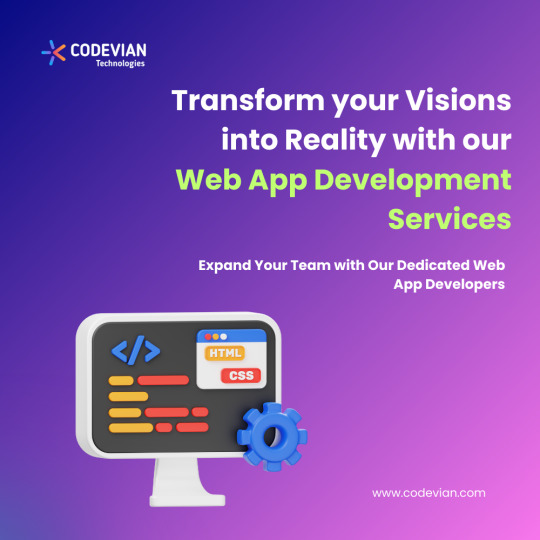
Hey there, tech enthusiasts! So, you've heard about web development and app development, but you're not quite sure what sets them apart? Don't worry, I'll break it down for you in simple terms!
First things first, what exactly is web development? Well, think of it like building a house on the internet! Web development involves creating websites or web applications that can be accessed through a web browser, like Google Chrome or Safari. It's all about designing, building, and maintaining websites that people can visit and interact with online.
Now, let's talk about app development. This is like building a cozy little home on your smartphone or tablet! App development involves creating mobile applications that are installed directly onto your device, like games, social media apps, or productivity tools. It's all about designing, building, and maintaining applications that people can download and use on their mobile devices.
So, what's the difference between web development and app development? Here are a few key distinctions:
Platform: The biggest difference between web development and app development is the platform they're built for. Web app development services focuses on creating websites or web applications that are accessed through a web browser on desktop computers or mobile devices. App development, on the other hand, focuses on creating mobile applications that are installed directly onto a device and accessed through an icon on the home screen.
Technology: Web development typically involves technologies like HTML, CSS, and JavaScript for creating the front end (what users see and interact with) and languages like PHP, Python, or Node.js for creating the back end (the server-side logic). App development, on the other hand, often involves languages like Java or Kotlin for Android development, Swift or Objective-C for iOS development, or frameworks like React Native or Flutter for cross-platform development.
Distribution: Web applications are usually accessible to anyone with an internet connection and can be accessed through a web browser without the need for installation. Mobile applications, on the other hand, need to be downloaded and installed onto a device from an app store like the Apple App Store or Google Play Store.
User Experience: The user experience of web applications and mobile applications can be quite different. Web applications are designed to work across different devices and screen sizes, so they often have a responsive design that adapts to fit the user's device. Mobile applications, on the other hand, are specifically designed for use on mobile devices and can take advantage of features like touch screens, GPS, and push notifications.
In conclusion, while web development and app development share some similarities, such as creating digital experiences for users, they also have key differences in terms of platform, technology, distribution, and user experience. Whether you're interested in building websites or mobile applications, both fields offer exciting opportunities to unleash your creativity and make an impact in the digital world!
2 notes
·
View notes
Text
Cross-Platform App Development In Dubai - An Insightful Guide To Follow
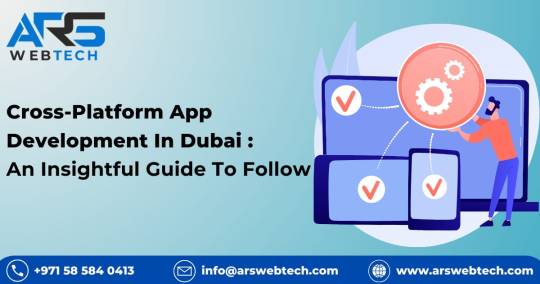
In the heart of the United Arab Emirates, the dynamic world of mobile app development is evolving rapidly, and Dubai is at its forefront. This guide delves into the world of cross-platform app development, highlighting its essentials and showcasing leading mobile app development firms in the UAE, like ARS Webtech.
An Insightful Overview About Cross-Platform App Development
Cross-platform app development involves creating mobile applications that run on multiple platforms using a single codebase. This approach contrasts with traditional native app development, which requires writing separate code for each platform, such as Java or Kotlin for Android and Swift or Objective-C for iOS.
Benefits of Cross-Platform App Development By Mobile App Development Companies UAE
Code Reusability: Developers can write and manage code that works across various platforms, reducing development time and effort.
Cost and Time Efficiency: Faster and more economical than developing individual native apps, it simplifies the entire development cycle.
Wider Market Reach: A single app can target different platforms, expanding market reach.
Consistent User Experience: Cross-platform frameworks support maintaining a consistent experience across platforms.
Faster Deployment and Updates: Facilitates simultaneous feature release across all platforms.
Popular Cross-Platform Development Frameworks
Flutter: Known for creating visually appealing apps, it's a strong choice for businesses in Dubai.
React Native: Supported by Facebook, it allows developers to build mobile apps using React and JavaScript, known for its flexibility and seamless integration.
Best Practices In Cross-Platform App Development
Prioritize User Experience: Ensuring apps function flawlessly with an intuitive interface is crucial.
Security Considerations: Especially important in sectors like healthcare and e-commerce, robust security measures are essential.
Scalability: The app should accommodate increased user traffic and additional features as the business grows.
Regular Updates and Maintenance: Ensuring the app remains compatible with the latest operating systems and user expectations.
Integration of Emerging Technologies: Incorporating AI, IoT, 5G connectivity, and machine learning enhances user experiences and contributes to Dubai's smart city initiatives.
Blockchain for Increased Security: Integrating blockchain technologies can add an extra layer of security, particularly in sensitive industries.
Conclusion
Cross-platform app development is a strategic choice for businesses in Dubai looking to maximize their digital presence. Companies like ARS Webtech are at the forefront of this movement, driving innovation and excellence in the mobile app development scene.
FAQs
1. Which frameworks are commonly used for cross-platform app development in Dubai?
Flutter and React Native are two prominent frameworks. Flutter is known for its visually stunning apps, while React Native offers flexibility and seamless integration.
2. How do mobile app development companies in Dubai prioritize user experience in cross-platform apps?
User experience is a top priority, ensuring consistent and delightful interfaces across devices.
3. How to choose between Flutter and React Native?
The choice depends on specific project requirements, design preferences, development speed, and existing tech stacks.
For further guidance or to start your cross-platform app development journey, contact ARS Webtech at +971585840413.
#ios app development#mobile app company#mobile app developer company#android#digital marketing#mobile app#digital marketing agency#digital marketing company#digital marketing strategy#digital marketing services
2 notes
·
View notes
Text
PWA vs Native, Hybrid, SPA, MP: A Complete App Development Guide
In today's digital age, having a mobile app for your business is essential to stay ahead of the competition and cater to the growing needs of mobile users. However, when it comes to an app development company, there are several options to consider; one of them is Nivida Web Solutions Private Limited. Among the various approaches available, Progressive Web Apps (PWAs), Native apps, Hybrid apps, Single-Page Applications (SPAs), and Multi-Platform apps (MP) are the most popular choices. Each of these options has its own strengths and weaknesses. In this comprehensive app development guide, we will compare and contrast these different approaches to help you make an informed decision.
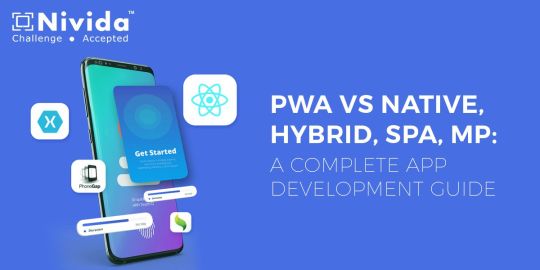
Progressive Web Apps (PWAs):
PWAs are web applications that are designed to look and function like native mobile apps. They are built using web technologies such as HTML, CSS, and JavaScript and are accessible through a web browser. PWAs are highly responsive, installable, and can work offline, making them an excellent choice for businesses looking to reach a wider audience across multiple platforms. Additionally, PWAs can be easily updated without requiring users to download new versions.
Native Apps:
Native apps are developed for specific platforms like iOS or Android using platform-specific languages (Swift or Objective-C for iOS, Java or Kotlin for Android). They offer the best performance, user experience, and access to device-specific features like camera, GPS, and push notifications. However, developing native apps requires separate codebases for different platforms, resulting in higher development costs and longer development cycles.
Hybrid Apps:
Hybrid apps are a combination of web and native apps. They are built using web technologies like HTML, CSS, and JavaScript and are wrapped in a native shell that enables them to be distributed through app stores. Hybrid apps provide a balance between cost-effectiveness and access to native features. However, they may not deliver the same performance as native apps, and certain device-specific functionalities might be limited.
Single-Page Applications (SPAs):
SPAs are web applications that load a single HTML page and dynamically update the content as users interact with the app. They offer a seamless user experience similar to native apps and can be accessed through web browsers. SPAs are easier to develop and maintain compared to native apps, but they may not provide the same level of performance and access to device features.
Multi-Platform Apps (MP):
Multi-platform apps are developed using cross-platform frameworks like React Native, Flutter, or Xamarin. These frameworks allow developers to write code once and deploy it across multiple platforms, saving time and effort. Multi-platform apps can achieve near-native performance and provide access to device features, making them a popular choice for businesses targeting multiple platforms.
When considering app development companies in India or Gujarat, it's essential to find a partner that understands your specific requirements and has expertise in the chosen development approach. Android App development companies in India and Gujarat offer a wide range of services, including native app development, hybrid app development, and PWA development. Similarly, Mobile App development companies in India and Gujarat can provide expertise in developing SPAs and MP apps.
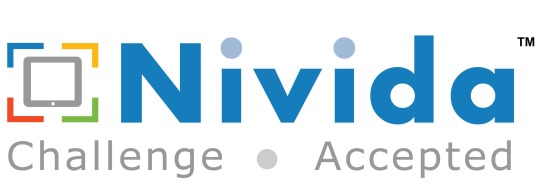
Before choosing an app development approach, consider factors such as budget, target audience, performance requirements, and time-to-market. Each approach has its own pros and cons, and the decision should align with your business goals and objectives. Consulting with a reputable app development company, Nivida Web Solutions Private Limited can help you navigate through these choices and make the right decision for your business.
In conclusion, the choice between PWAs, Native apps, Hybrid apps, SPAs, and MP apps depends on various factors such as performance, cost, development time, and target audience. Each approach has its own merits, and it's important to evaluate them based on your specific needs when selecting an app development company in India.
#eCommerce development company in India#eCommerce development Companies in Gujarat#Mobile App development Companies in India#Mobile App development company in Gujarat#Android App development Companies in India#Android App development company in Gujarat#Digital Marketing company in India
6 notes
·
View notes
Text
As for, "replicating the patterns" part, here is a concrete example of it in action:
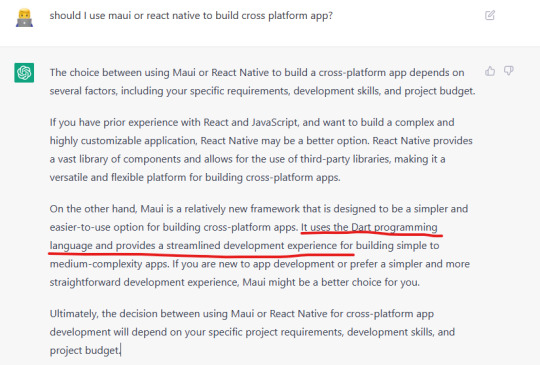
For context:
All of "MAUI", "React Native" and "Flutter" are three entirely different GUI frameworks, that is, tools which you can use to create graphical applications for smartphones. In particular, the entire user interface in Discord mobile app is made using React Native.
React Native exists since around 2015
Flutter exists since around 2017, and uses the Dart language, which is not very commonly used, and in fact, the only people I know that use Dart, they use it because they want to use Flutter.
MAUI exists since around 2021, and uses the C# language. 2021 happens to be very close to the cutoff date of what ChatGPT "known" around the time this query was done.
MAUI also happens to be way less popular than both React Native and Flutter
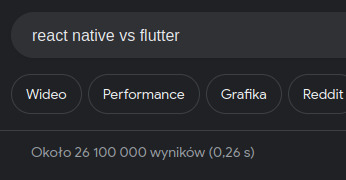
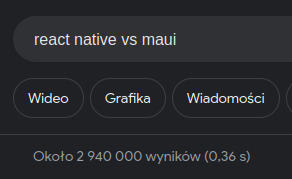
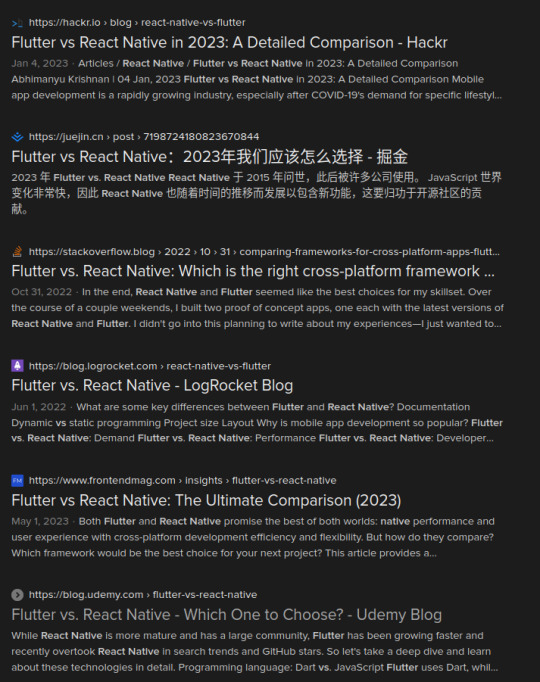
End result: ChatGPT confidently says that MAUI uses Dart language because it if it's not React Native then it clearly must be Flutter.
Bottom line: Do not use ChatGPT as an expert system. Companies that do that actually feed GPT with information beforehand. You don't.
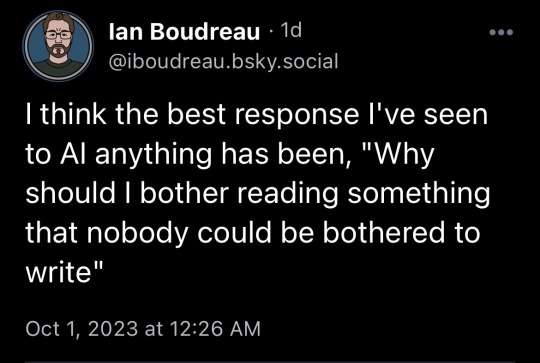
106K notes
·
View notes
Text
World-Class Mobile App Development for a Global Audience

In today’s hyper-connected digital economy, mobile apps are no longer optional—they’re essential. Whether it’s for eCommerce, healthcare, logistics, or finance, mobile applications are redefining how businesses operate and how customers engage. The demand for high-quality mobile app development services is growing rapidly, driven by the need to reach diverse audiences across multiple countries and platforms. Organizations looking to make a real impact must now think globally while executing locally, ensuring their apps are not just functional but also tailored for a wide range of users across different cultures and regions.
The Need for Global-Ready Apps
The digital marketplace is vast, and the most successful mobile apps are those that transcend borders. This requires more than just language translation. Global-ready mobile applications must be designed with cultural relevance, regulatory compliance, performance optimization, and accessibility in mind. From payment gateway integrations specific to local markets to UI/UX elements that reflect regional user behavior, going global with your app means making it feel local to every user, wherever they are.
Creating such experiences demands a development process that is deeply rooted in research, strategy, and modern technology. Businesses must work with teams that understand the nuances of international markets and can adapt their approach to deliver personalized, high-performing mobile solutions.
Cross-Platform Compatibility
With a global audience comes platform diversity. Users may access your app through Android in one country and iOS in another. This makes cross-platform compatibility a critical component of any mobile development strategy. Technologies like Flutter, React Native, and Xamarin enable developers to build apps that work seamlessly across multiple devices without compromising performance or user experience.
By choosing the right tech stack and development framework, businesses can significantly reduce time-to-market, maintain consistent branding, and ensure that updates and features roll out simultaneously across all platforms.
Localized User Experience
Localization is far more than just converting text into another language. It involves adapting the app’s content, design, and functionality to align with the cultural expectations of users in each target market. From layout preferences to color symbolism, every detail matters. For instance, a design that works well in Western markets may not resonate with users in Asia or the Middle East.
Smart localization enhances user engagement and boosts app adoption rates. It’s an investment in user satisfaction and brand loyalty, making your app more accessible and relatable to a broader audience.
Security and Compliance Across Borders
When launching a mobile app globally, data privacy and legal compliance are not optional. Different regions have different regulations—such as GDPR in Europe, HIPAA in the United States, and PDPA in Asia-Pacific countries. A world-class mobile app must be designed with data protection, user consent, and secure data storage in mind from the very beginning.
Security features like two-factor authentication, end-to-end encryption, and regular vulnerability assessments are vital. They not only protect your users but also establish trust in your brand across international markets.
Agile and Scalable Development
To stay competitive in the global app landscape, development must be agile and scalable. Agile methodologies enable faster iterations, quicker feedback loops, and adaptive planning. This approach is especially important when launching in multiple regions, as it allows teams to respond rapidly to user feedback and market changes.
Moreover, scalability is crucial. Your app should be built on an architecture that can handle increasing traffic, new features, and integration with third-party systems without degrading performance.
Data-Driven Decision Making
Analytics play a pivotal role in optimizing mobile apps for global users. From usage patterns to feature adoption rates, real-time data helps businesses understand what’s working and what’s not in each region. Armed with this knowledge, teams can refine user flows, improve retention, and boost conversions.
Personalized recommendations, behavioral targeting, and A/B testing can all be driven by data, helping businesses deliver more value to users in every corner of the world.
Partnering with the Right Experts
Launching a successful app on a global scale requires the right strategic and technical partners. A world-class mobile app development company brings not only coding expertise but also a deep understanding of international markets, scalable architecture, and end-user psychology. From ideation to post-launch support, having a skilled and experienced team ensures your app stands out in a crowded global marketplace.
By choosing a partner that aligns with your business goals and understands the nuances of global app deployment, you set the stage for sustainable growth and long-term success.
#mobile app development company#software development company#mobile application development company#mobile application development services
0 notes
Text
Find the Top 5 Latest Mobile App Development Software in 2025 — Expert Picks by TimD — Tim Digital
Choosing the right mobile app development software in 2025 is more than just a technical decision — it’s a strategic advantage. With the growing pressure to deliver faster, reduce bugs, and maintain UI consistency across devices, developers and companies alike are re-evaluating their tech stacks.

Why the Right Mobile Development Stack Makes All the Difference
Many development teams struggle not because of a lack of skill but due to poor tooling and platform fragmentation. Common issues include:
Too much time spent on duplicate codebases
Difficulty managing bugs across platforms
Low design consistency between iOS and Android versions
A better stack can lead to faster time-to-market, fewer bugs, and improved collaboration across teams.
Snapshot: 5 Game-Changing Mobile Development Frameworks
In 2025, five standout mobile development frameworks are leading the way.
Flutter, backed by Google, offers hot reload, expressive visuals, and UI consistency — making it ideal for cross-platform UI precision. React Native, developed by Meta, is JS/TS-based and features fast refresh and a robust plugin ecosystem, best suited for teams transitioning from web to mobile. .NET MAUI, Microsoft’s enterprise-grade solution, combines native speed with C# and deep integration into the Microsoft ecosystem, perfect for unified experiences across mobile and desktop. For Apple-centric development, Swift stands out with hardware-level API access and deep iOS integration, delivering high-performance, iOS-only applications. Lastly, Kotlin, Google’s preferred language for Android, is known for its concise syntax and Jetpack Compose support, making it the go-to choice for scalable, Android-first projects.
1. Flutter — Deliver Visually Consistent Cross-Platform Apps
Backed by Google, Flutter continues to lead the way for teams needing high-performance mobile apps from a single Dart codebase. With its built-in Skia rendering engine, it doesn’t rely on native UI components — giving you full control over visuals on both Android and iOS.
Why It’s a Top Pick:
Rapid UI iteration with Hot Reload
Mature ecosystem on pub.dev
Excellent for MVPs, startups, and custom-designed apps
2. React Native — A Natural Fit for Web Development Teams
Created by Meta, React Native allows JavaScript developers to build native mobile apps without switching tech stacks. It’s ideal for web teams transitioning into mobile, especially with tools like Expo simplifying builds.
Best Use Cases:
Fast deployment using React-based components
Shared codebase between web and mobile
Lightweight apps needing high iteration cycles
3. .NET MAUI — Microsoft’s Unified Solution for Desktop and Mobile
.NET MAUI enables enterprise-grade cross-platform development using C# and XAML. It compiles to native code, ensuring performance, while simplifying development for organizations already using Microsoft tools and Azure.
Why Enterprises Prefer It:
Strong support for desktop/mobile hybrid builds
Full access to native APIs
Streamlined with Visual Studio and Azure DevOps
4. Swift — The Gold Standard for Native iOS App Development
Developed by Apple, Swift is the go-to for building fluid, fast, and fully integrated iOS apps. Combined with SwiftUI or UIKit, it’s the most reliable way to deliver App Store-ready applications with deep device capabilities.
Ideal For:
iOS-only apps
Products that leverage ARKit, Core ML, or HealthKit
Premium apps requiring pixel-perfect animations
5. Kotlin — For Next-Level Native Android Performance
Endorsed by Google and developed by JetBrains, Kotlin is a modern language designed for Android. It brings null safety, concise syntax, and coroutine-based async capabilities, making it a favorite among Android developers in 2025.
Where It Shines:
Clean migration path from Java
Jetpack Compose support for UI innovation
Great for complex, scalable Android apps
Native vs. Cross-Platform vs. Hybrid — What Should You Choose?
When it comes to choosing the right development approach, your decision should align with your product roadmap, team capabilities, and performance expectations. Native development offers the best UX quality and strong scalability, making it ideal for performance-intensive apps — but it comes with higher maintenance needs and moderate development speed. Cross-platform frameworks like Flutter and React Native strike a balance by allowing faster development, lower maintenance, and good scalability, although UX quality may slightly lag behind native builds. On the other hand, hybrid frameworks such as Ionic are fast to develop and easy to maintain but offer limited user experience and only moderate scalability — making them suitable for basic MVPs or internal tools where performance is not critical.
Expert Tip: If your app relies on camera, AR, or sensors — go native. For time-to-market and design parity, cross-platform tools like Flutter or React Native offer the best ROI.
What to Look for in Mobile App Development Platforms
When selecting mobile development tools in 2025, top agencies and development teams recommend looking for:
Real-time debugging and emulation support
Comprehensive UI libraries
CI/CD compatibility (e.g., App Center, GitHub Actions)
Easy deployment to Play Store and App Store
Third-party plugin support for maps, payments, authentication, etc.
Final Thoughts
Whether you’re launching a feature-rich Android app, building an enterprise mobile suite, or rapidly shipping a cross-platform MVP — choosing the right development platform in 2025 is key to avoiding unnecessary rework and scaling with confidence.
If you’re looking for expert guidance, several agencies — like TimD — Tim Digital — are offering tailored consulting and mobile app solutions built on the most robust tools in the market.
👉 Looking for the Best Mobile Apps Development Services in Kolkata? Explore trusted mobile development experts who can help architect your next big idea, fast and friction-free.
Follow us for insights and expert strategies on LinkedIn, Facebook, Instagram, YouTube, Pinterest, and Twitter (X).
#MobileAppDevelopment#AppDevelopmentTools#CrossPlatformDevelopment#FlutterDevelopment#SwiftProgramming#KotlinAndroid#DotNetMAUI#iOSDevelopment#AndroidDevelopment#TechStack2025#TimDigital#TimDTech#SoftwareDevelopment
0 notes
Text
Hire Remote Developers with SMT Labs IT Staff Augmentation
In today's fast-paced digital world, growing your tech team quickly and effectively can make all the difference. Whether you're a startup looking to scale fast or an enterprise wanting to fill skill gaps, IT staff augmentation offers a flexible, cost-effective solution. And when it comes to finding top-tier remote talent, SMT Labs delivers unmatched value. Here's how.
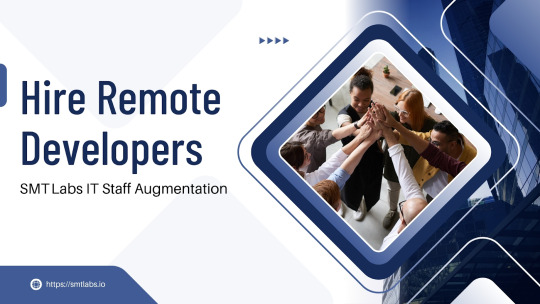
What Is IT Staff Augmentation—and Why You Need It
IT staff augmentation means integrating external developers into your team to handle specific projects or skill gaps without the overhead of full-time hires. Compared to traditional hiring or long-term outsourcing, it offers:
Flexibility – Easily scale your team up or down based on project needs
Speed – Quickly onboard experienced developers without months‑long hiring cycles
Cost‑efficiency – No need to pay for idle capacity, office space, or benefits
Specialized expertise – Plug in niche skills—from iOS to React Native, backend to DevOps
Pretty compelling, right? Now, let's talk about SMT Labs and why their staff augmentation service stands out.
SMT Labs: Your Remote Development Partner
Based in Indore, India, SMT Labs has been delivering web and mobile solutions since 2017. They’ve built a reputation with global clients—especially in the USA—for high-quality development services, including robust staff augmentation offerings.
Highlights of SMT Labs’ Staff Augmentation
Dedicated remote developers—From part-time to full-time, as per your project’s lifecycle .
Flexible engagement models—Need 40–80 hours/month? Or a full 160‑hour monthly commitment? They’ve got you covered.
Rich technology stack—iOS, Android, Flutter, React Native, Node.js, PHP, Python, AI/ML… you name it, they support it.
100% replacement guarantee—If a developer doesn’t fit, SMT Labs will replace them with no hassle.
IP & NDA protection—Critical for any remote work engagement .
Time‑zone flexibility—Seamless overlap with your operational hours.
Transparent reporting—Daily, weekly, or monthly progress updates and code delivery.
Specialties: Hire Software Developers On‑Demand
Whether you need React Native developers, iOS/Android/mobile app experts, or a full-stack/backend team, SMT Labs has you covered:
Mobile App Developers
iOS & Android (native) – Swift, Objective-C, Kotlin, Java
Cross-platform – React Native, Flutter
Frontend Web Developers
React.js, Angular, Vue.js, Bootstrap, HTML/CSS
Backend & Full‑Stack Engineers
Node.js, Python, PHP, Laravel, MySQL, MongoDB, AWS, Azure
AI/ML, Data & DevOps
From machine learning models to cloud automation
Plus, they provide QA engineers, project managers, DevOps, cloud specialists, and more.
Top Benefits of Choosing SMT Labs
Let’s break down why hiring remote developers through SMT Labs can transform your project's trajectory:
1. Speed & Agility
No waiting months for full-time hires. Get vetted, ready-to-start developers within days.
2. Cost Savings
Access skilled engineers in India’s competitive talent market—without sacrificing quality.
3. Technical Depth
Their team spans a wide tech stack—from mobile and web to AI and cloud—ensuring you get the right expertise for your project.
4. Scalability
Easily adjust resource levels—scale up when deadlines are tight, scale down post-launch.
5. Risk Mitigation
With the replacement guarantee and strong NDAs, your project stays smooth and secure.
6. Quality & Communication
SMT Labs is transparent, agile, and focused on consistent delivery backed by years of global project work.
How It Works
The process is simple and client-focused:
Requirement call – You outline your needs and priorities.
Talent shortlist – SMT Labs screens and suggests best-fit profiles.
You interview – Pick the developer(s) who fit your team style.
Onboard & start – They assist with setup and begin work under your management.
Enjoy daily/weekly code delivery and transparent communication from your remote team.
Ideal Use Cases
Replacing or supplementing in-house dev teams
Building an MVP or scaling a product rapidly
Adding niche skillsets (e.g., React Native, AI/ML)
Needing project management, QA, DevOps, or cloud skills
Looking to cut cost without compromising quality
Basically: hire software developers, hire remote developers, hire programmer, hire mobile app developers, hire iOS or React Native developers—all with a flexible, risk‑mitigated model.
How to Get Started with SMT Labs
Step 1: Go to their “Hire Developers” page and fill in your requirements.
Step 2: They'll arrange a call to align on your goals.
Step 3: Review profiles and interview.
Step 4: Onboard your dedicated remote developers and begin delivering value.
You’ll enjoy the flexibility to start, pause, or scale engagement easily—perfect for agile teams looking to evolve quickly.
Final Thoughts
If your project requires top-tier talent—whether you're looking to hire software developer, hire mobile app experts, or hire React Native developers—and you need them fast, cost-effectively, and securely, SMT Labs is your ideal partner.
With their deep technical expertise, flexible talent model, and commitment to quality and transparency, SMT Labs’ IT staff augmentation service helps you build strong, scalable teams in weeks—not months.
Ready to hire remote developers? Connect with SMT Labs now to start scaling smarter and accelerating your roadmap.
Contact SMT Labs Today Reach out to their team via the “Hire Developers” page.
#staffaugmentation#hire software developers#hire remote developers#hire software programmer#hiring a software developer#hire mobile app developers#hire ios app developer#hire React Native developer#it staff augmentation#it staff augmentation services#it staff augmentation company#it staff augmentation services in usa
0 notes
Text
Hire Developers: Build Scalable, Future-Ready Digital Products
In the digital age, the difference between a successful product and a failed one often comes down to the quality of the team behind it. Whether you're launching a new app, scaling your platform, or implementing next-gen technologies, the need to hire developers with the right skills, mindset, and experience is more critical than ever.
Today, businesses across industries—from startups to large enterprises—are not just looking for coders. They’re looking for problem solvers, product thinkers, and technology partners who can turn complex ideas into scalable, reliable solutions.
If you're planning to build a future-ready digital product, the smartest move you can make is to hire developers who understand not just code, but the product, the market, and the users.
Why Hiring the Right Developers Matters
In today’s hyper-competitive tech landscape, hiring just any developer won’t cut it. You need professionals who bring more than technical skills—people who align with your vision and help you innovate with agility.
Here's what the right developers bring to the table:
Faster Time-to-Market: Agile development means your idea goes live quicker.
Scalability: Code that grows with your product and user base.
Security & Compliance: Best practices to protect data and ensure trust.
Performance Optimization: Apps that load faster and deliver seamless UX.
Cross-Disciplinary Collaboration: Developers who work well with designers, PMs, and QA teams.
From SaaS experts building subscription-based platforms to AI engineers powering intelligent apps, success starts with hiring the right development talent.
When Should You Hire Developers?
You should consider hiring developers when:
You're launching a new digital product or MVP
You're scaling an existing platform and need bandwidth
You want to integrate AI product development into your systems
You're modernizing legacy software
You're expanding into Web3 or decentralized technologies
Having the right developers ensures your goals are met efficiently, cost-effectively, and without technical debt down the line.
Key Qualities to Look for When Hiring Developers
Whether you're building in-house or outsourcing to a trusted partner, here’s what you should look for:
1. Technical Expertise
Frontend: React, Angular, Vue.js
Backend: Node.js, Python, Go
Mobile: Flutter, React Native
Cloud & DevOps: AWS, GCP, Docker, CI/CD
2. Product Thinking
Look for developers who understand business goals and user needs—not just code requirements.
3. Experience with Emerging Tech
Hiring developers with experience in AI product development or Web3 ensures your product is built with a future-proof approach.
4. Team Collaboration
Great developers are team players who collaborate with designers, QA testers, and product owners seamlessly.
5. Problem-Solving Skills
The best developers don’t just fix bugs—they prevent them and solve deeper architectural challenges.
Hire Developers for Every Stage of Your Product Lifecycle
Whether you're at the idea stage or scaling post-launch, skilled developers can step in at various phases:
Prototype & MVP Development
Full-Scale Product Engineering
AI and Machine Learning Integration
Cloud & DevOps Setup
Ongoing Maintenance & Optimization
Expert teams, including SaaS experts, also provide architectural and strategic input to make sure your product is ready for high traffic, security threats, and future expansion.
The Rise of Global Development Talent
Thanks to remote collaboration and cloud-based workflows, companies can now tap into global talent pools. Hiring developers remotely allows access to:
Specialized skill sets not available locally
Faster development cycles with 24/7 global teams
Cost-effective solutions without compromising on quality
Trusted Web3 development companies and AI-first teams often operate globally, delivering robust digital products across time zones and tech stacks.
Common Mistakes to Avoid When Hiring Developers
Hiring based only on price: Cheap doesn’t always mean efficient or reliable.
Focusing only on hard skills: Soft skills and communication matter.
No clear scope or onboarding: Lack of clarity slows down even the best developers.
Not evaluating portfolio or live projects: Always check past work before hiring.
Why Partner with a Product Engineering Company?
While freelancers can help with short-term tasks, building scalable products often requires an entire team. That’s where development partners like SaaS experts and AI-focused agencies come in.
Benefits include:
Access to cross-functional teams (developers, designers, PMs, QA)
Dedicated support from idea to launch
Agile development processes
Proven frameworks and reusable assets
If you're developing anything beyond a basic app—especially in AI, blockchain, or multi-tenant SaaS—it’s smart to hire developers from companies with domain-specific experience.
Final Thoughts
Hiring the right developers is not just a technical decision—it’s a strategic business move. Whether you're building an AI-powered application, a SaaS product, or a decentralized platform with blockchain elements, success starts with finding developers who understand your mission and deliver real value.
To innovate at scale, compete globally, and create long-lasting digital products, you need more than code—you need people who think like partners.Ready to take the next step? Hire developers who can turn your vision into powerful, scalable, and intelligent software.
0 notes
Text
How Can Companies Optimize ROI by Converting Android Apps to iOS (or Vice Versa)?
Optimize ROI by Converting Android Apps to iOS
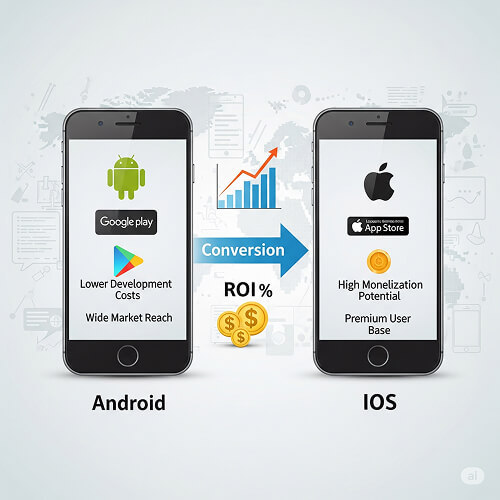
Introduction
In today’s mobile-first landscape, companies aiming to maximize their mobile app ROI must consider platform expansion. With Android dominating in user volume and iOS leading in revenue generation, converting your app from Android to iOS (or vice versa) can be a strategic move to reach a broader audience and boost profitability. This blog explores how app conversion can be a growth catalyst, helping businesses lower acquisition costs and increase user engagement across platforms.
Understanding Android to iOS App Conversion (or Vice Versa)
App conversion refers to the process of adapting an existing mobile application to operate on a different platform. Whether moving from Android to iOS or the reverse, this process involves more than just copying code. It includes reworking the UI/UX, adapting to platform-specific APIs, and ensuring functional parity across devices. Successful app conversion demands expertise in both Android and iOS app development to maintain performance and user satisfaction.
Top Reasons to Convert Android Apps to iOS (or Vice Versa)
Reach a wider audience: Tap into new user segments by expanding your presence to another platform.
Increase revenue potential: iOS users typically have higher lifetime value, while Android's larger user base can fuel ad-driven revenue models.
Improve brand presence: Being available on both platforms builds credibility and trust with users.
Maximize previous investments: Reusing assets and backend systems speeds up time-to-market and reduces development costs.
How App Conversion Improves ROI
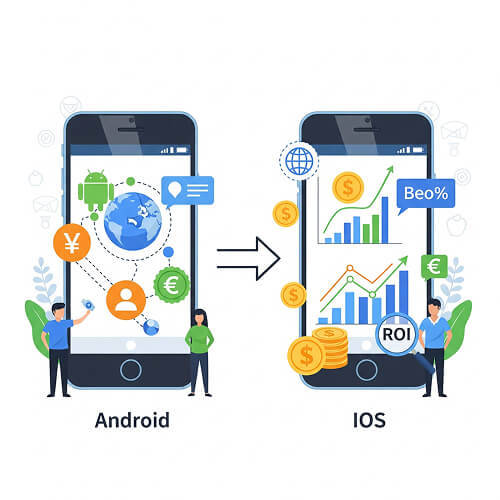
Converting your app allows you to scale without starting from scratch, which significantly lowers development costs. The ability to reach more users boosts installs, engagement, and revenue. Moreover, a cross-platform presence strengthens brand authority and opens doors to new monetization opportunities, like in-app purchases or subscriptions, ultimately maximizing return on investment.
Key Challenges in Mobile App Platform Conversion
UI/UX differences: iOS and Android have distinct design languages (Material vs. Human Interface Guidelines).
Technical variations: Differences in programming languages (Java/Kotlin for Android vs. Swift/Objective-C for iOS).
Third-party integration compatibility: Not all libraries and SDKs work identically across platforms.
Testing requirements: Each platform has its own device ecosystem and app store policies.
Steps to Successfully Convert Your Mobile App
Audit existing app code and features
Choose the right development approach (native or cross-platform)
Redesign UI/UX to fit the new platform standards
Adapt backend APIs and third-party services
Test extensively across devices and OS versions
Deploy to the relevant app store with optimized listings
Tools & Technologies for App Conversion
Flutter: Ideal for creating a single codebase for both platforms
Kotlin Multiplatform: Enables code sharing between Android and iOS
React Native: Popular framework for cross-platform mobile development
Xamarin: Microsoft-backed tool for .NET-based apps
Choosing the right tech stack depends on performance needs, UI complexity, and existing code structure.
Cost Estimation & ROI Forecasting

App conversion is typically more cost-effective than building a new app from scratch. Factors affecting cost include app complexity, UI redesign, and backend changes. Companies should calculate potential ROI by comparing conversion cost with projected increase in user acquisition, engagement, and revenue across the new platform.
Case Studies: App Conversion Success Stories
Example 1: A retail app that expanded from iOS to Android and saw a 40% increase in monthly active users
Example 2: A SaaS product that moved from Android to iOS, leading to a 30% boost in in-app purchases These examples showcase how strategic app conversion can result in measurable growth.
Tips to Maximize ROI After Converting Your App
Invest in App Store Optimization (ASO) for visibility
Launch targeted marketing campaigns on the new platform
Monitor analytics closely to track engagement and retention
Solicit user feedback to continuously refine the app experience
Conclusion
Converting your Android app to iOS or vice versa is not just a technical decision—it's a business strategy. When done right, it can significantly enhance user reach, reduce development overhead, and boost ROI. By partnering with an experienced app development company like CQLsys Technologies, you can ensure a smooth transition and unlock new growth opportunities across platforms.
#AppMigration#MobileStrategy#AppMarketing#TechROI#DigitalGrowth#AppScaling#iOSDeveloper#AndroidDeveloper#MobileSolutions#BusinessTech#UserEngagement#RevenueGrowth#AppUpgrade#TechTips#CQLsysTech#Innovation
0 notes